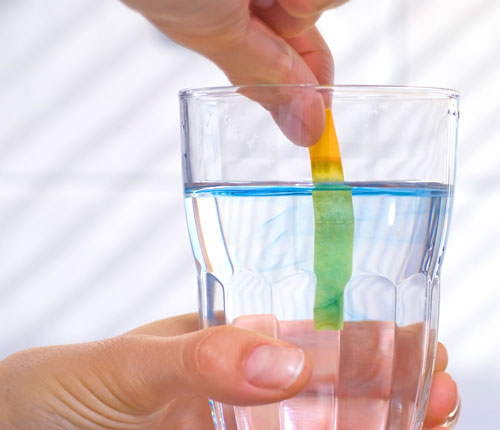It’s possible you’ve never looked at the pH level of the water in your home. But if you did, it might send you running for a water testing kit.
Though it’s not often spoken of, the pH of the water in your home is crucial to your health. It could influence a variety of health ailments, not to mention what organisms can survive in your water.
The truth is your water’s pH levels can be affected by a variety of things—even just precipitation and access to water bodies. Understanding water pH can help ease your mind and help you determine if changes in your water’s pH require water treatment.
If you’re wondering where to start, we can help. At Atlantic Blue Water Center, we help customers remove toxins and contaminants from their water supply with ease, to ensure they have safe, clean drinking water.
What is pH, and What Does it Measure in my Water?
Here’s something you may remember from chemistry class: pH is the measurement of how basic or acidic your water is.
The full spectrum of pH measurements stretches between 0 and 14. The middle, 7, is the neutral point on a pH scale. Anything below the neutral point—between 0 and 6—is acidic, while anything above a 7 is a “base.”
For reference, vinegar sits at about a 2, and bleach is just above 13. The EPA recommends that water’s pH sit somewhere between 6.5 and 8.5.
Your water’s pH level can be affected by various sources, but it’s most commonly a result of chemicals or minerals present in the water. If the pH levels in your home change, it could indicate that the water has been altered chemically. That might not be a bad thing, but given the range of causes, you’ll want to err on the side of caution.
The easiest plan of action is to have a professional screen your water for you. While a home pH test can indicate that your pH has shifted, it can’t screen for hazardous contaminants the same way an expert can. Atlantic Blue Water Center has a state-of-the-art water testing laboratory that can accurately test the pH level of your water, allowing us to determine the best water treatment solution for your unique water situation.

pH and Water Quality
You’ve tested your water’s pH — now what?
Depending on where you live, your pH might be affected by a variety of factors. Things like weather, natural structures nearby, and human activities in your area could shift your drinking water’s pH—and not in unsafe ways either.
But just because they’re “safe” doesn’t mean they aren’t unpleasant. Higher pH levels are known to cause a bitter taste and alter the efficiency of water pipes and appliances. As deposits build up inside these things, they’re less able to filter out harmful chemicals like chlorine, which can affect your health and laundry alike.
When the pH gets too low, it skews acidic, and the water can more easily wear down metals and other substances—certainly not things you want leaching into your drinking water. Lower pH levels can also indicate the presence of pollution.
Your water’s natural pH levels will be impacted based on where you live—pH levels commonly vary across the United States, and it doesn’t always indicate more dangerous water. That being said, water contamination is not something you want to play with. Water on either extreme of the EPA recommendations could indicate that there are chemical pollutants, like heavy metal, seeping into your water.
Those problems can compound as well. Water that is below 7 in pH can be corrosive or aggressive. Over time, that type of water wears down both pipes and water heaters, creating rust inside.
If your pH level is above or below normal, it may be time to look into water treatment.
Signs You May Need Water Testing or Treatment
Public water systems work to ensure their water is held at a normal pH level, but if you have well water or you’re suspicious that your water isn’t passing muster, there are a few signs to watch for.
Since pH measures the chemical balance of water, the pipes that the water is passing through are a great place to start when trying to suss out the source of a pH imbalance. When you’re looking at faucets and pipes, keep an eye out for rust, particularly red, white, or blue. That discoloration can be a sign of corrosion brought on by water that is too acidic.
Discoloration in water is another obvious sign that something isn’t right with your water. To get to the root of the problem, get in touch with our team at Atlantic Blue Water Center to arrange an appointment. We can help with anything from bad smells to low pH—we even have plumbers on our team to fix corroded pipes if necessary. Call us today at (410) 751-9200.
